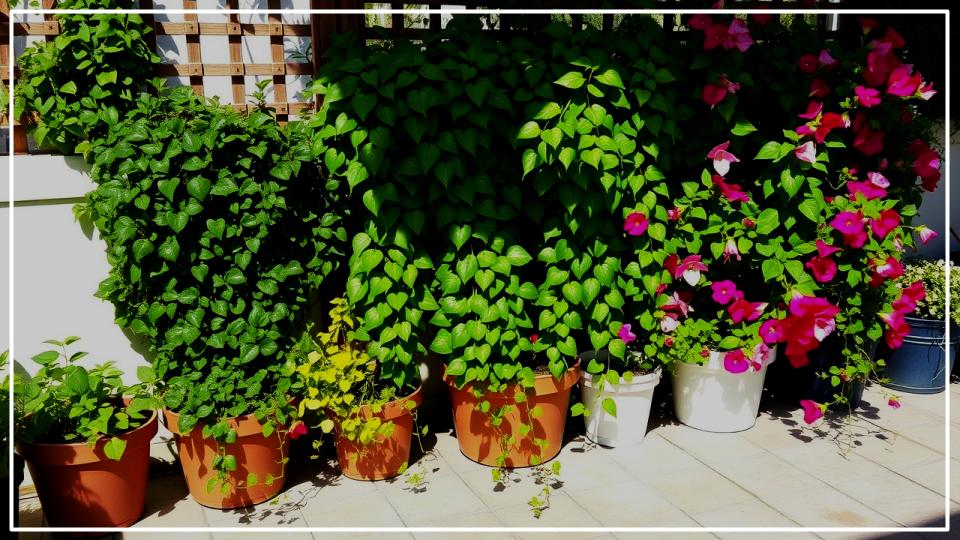
The allure of a garden that stretches skyward is undeniable. It speaks of abundance, of nature’s clever reach, and of a certain romantic charm. But what if your gardening space is a sun-drenched balcony, a cozy patio, or even a welcoming front stoop? The delightful truth is that you don’t need sprawling grounds to cultivate this vertical magic. With the right selection of climbing plants for pots, you can transform humble containers into breathtaking vertical garden masterpieces, adding dimension, privacy, and a touch of living artistry to any outdoor area. This guide will unveil nine exceptional climbers perfectly suited for container life, offering you the inspiration and know-how to elevate your gardening game, quite literally. Get ready to discover your new favorite way to grow.
Quick Tips for Thriving Potted Climbers:
- Pot Power: Choose containers at least 15-20 inches in diameter and depth for most climbers to allow ample room for root growth.
- Support System Savvy: Install a trellis, obelisk, or other support structure at the time of planting to avoid disturbing roots later.
- Drainage is Key: Ensure your pots have excellent drainage holes; climbers detest ‘wet feet’.
- Consistent Care: Potted plants dry out faster and require more frequent watering and feeding than their in-ground counterparts.
- Right Plant, Right Place: Match your climber’s light requirements (sun, part-shade) to your available space.
Why Choose Climbing Plants for Pots? The Magic of Vertical Greenery
Opting for climbing plants for pots is more than just a gardening trend; it’s a savvy solution for modern living and a gateway to truly enchanting outdoor spaces. The most obvious benefit is their space-saving nature. When ground area is at a premium, growing upwards utilizes often-overlooked vertical real estate, making them ideal for small space gardening. Imagine a cascade of fragrant jasmine by your reading nook or a vibrant curtain of morning glories adding cheer to a plain wall – all without sacrificing precious floor space.
Beyond practicality, these upwardly mobile plants introduce an element of dynamic beauty and structure. They can soften hard architectural lines, create living privacy screens, or frame a view with floral or foliar elegance. I’ve always found that a well-placed potted climber can transform a simple seating area into an intimate, secluded retreat. There’s also an inherent satisfaction in training a plant, guiding its growth, and witnessing its journey skyward. This interactive process fosters a deeper connection with your green companions. Plus, container gardening offers control over soil conditions, which can be a boon for plants that are particular about their growing medium, as noted by experts.
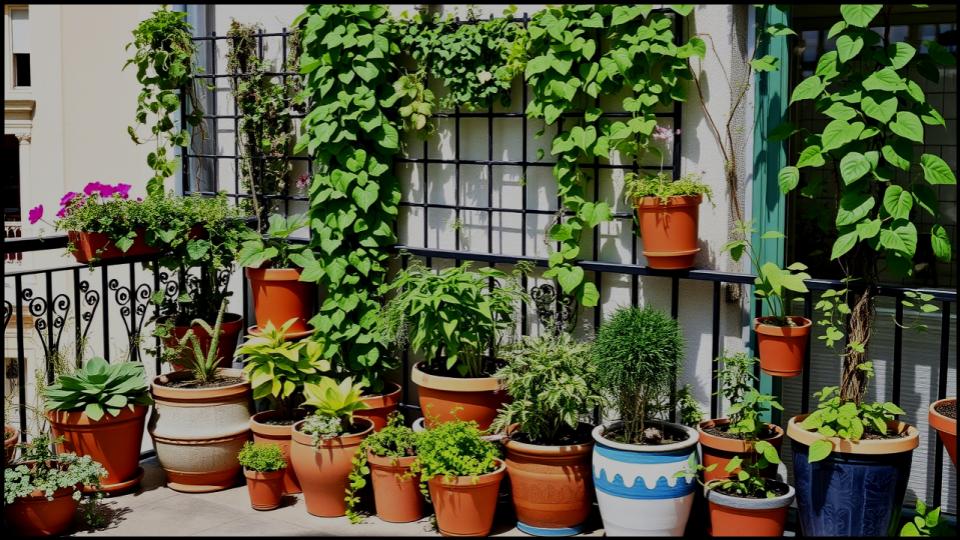
Selecting Your Stars: The 9 Best Climbing Plants for Pots
Choosing the right plant is paramount for success. Not all climbers are suited to the confines of a pot, but many thrive, offering seasons of beauty. Here are nine of my top recommendations for creating your own vertical masterpieces.
Star Jasmine (Trachelospermum jasminoides)
- Why it’s a star: This evergreen charmer boasts glossy, dark green leaves that provide year-round interest, but it’s the profusion of intoxicatingly fragrant, star-shaped white flowers in late spring and summer that truly steals the show. It’s relatively well-behaved in a container.
- Growing Guide: Prefers full sun to partial shade. Provide a sturdy trellis or support for its twining stems. Water regularly, especially during hot weather, allowing the top inch of soil to dry out between waterings. In my experience, a little afternoon shade in hotter climates keeps the foliage looking its best.
- Pot Size: Minimum 18-20 inches diameter.
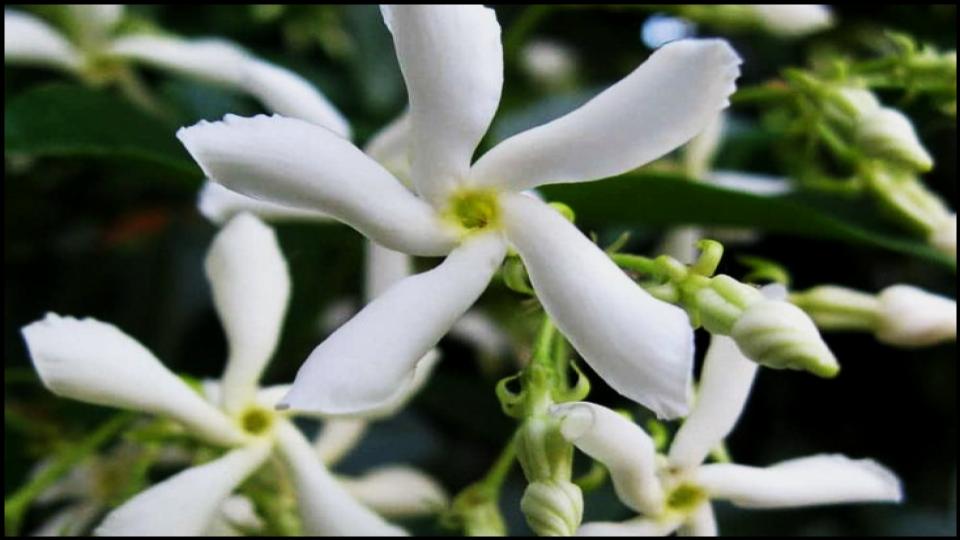
Clematis (Compact Varieties)
- Why it’s a star: The “Queen of Climbers” offers an astounding variety of flower shapes, sizes, and colors. For pots, seek out compact or shorter-growing varieties like Clematis ‘Piilu’ (profuse pink blooms), ‘Vancouver Cotton Candy’ (delicate, frilly pink), or those from pruning Group 3, which are cut back hard annually, keeping their size manageable.
- Growing Guide: Famously, clematis prefer “feet in the shade, head in the sun.” Mulch the base or plant shallow-rooted annuals to keep the roots cool. They climb by twisting their leaf stalks around supports, so provide a trellis with thin rungs. Consistent moisture is key. The Royal Horticultural Society (Note: Search RHS for clematis container growing guide) offers excellent advice on selecting and caring for clematis.
- Pot Size: Minimum 15-18 inches diameter.

Morning Glory (Ipomoea tricolor, e.g., ‘Heavenly Blue’)
- Why it’s a star: For a quick, spectacular burst of annual color, nothing beats the Morning Glory. ‘Heavenly Blue’ unfurls stunning azure trumpets each morning, creating a daily spectacle. They are vigorous twiners, quickly covering a small trellis.
- Growing Guide: Full sun is a must for abundant blooms. Sow seeds directly into the pot after the last frost or start indoors a few weeks earlier. Provide a support structure immediately. They are quite thirsty, so check soil moisture daily.
- Pot Size: Minimum 12-15 inches diameter.

Black-Eyed Susan Vine (Thunbergia alata)
- Why it’s a star: This cheerful annual (or tender perennial in warmer zones) produces a cascade of bright yellow, orange, or white flowers, each with a distinctive dark central eye. It’s a fast grower but remains manageable in a pot or even a large hanging basket.
- Growing Guide: Thrives in full sun to light shade. Its twining stems will readily climb netting, thin trellises, or even bamboo stakes. Keep the soil consistently moist. I love using Black-Eyed Susan Vine to spill over the edges of larger mixed containers too.
- Pot Size: Minimum 10-12 inches diameter, or in hanging baskets.
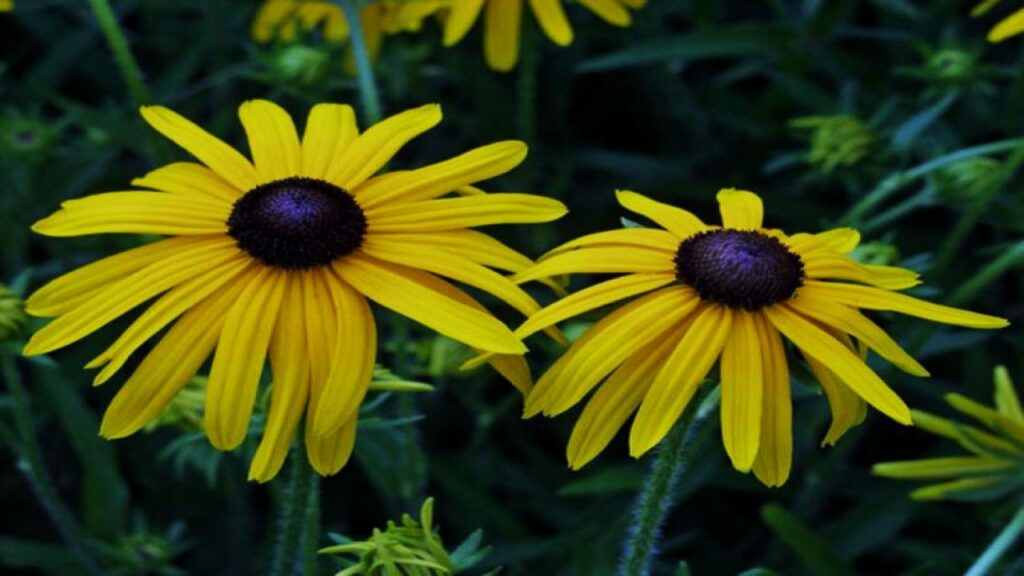
Sweet Pea (Lathyrus odoratus – shorter vining types)
- Why it’s a star: The quintessential cottage garden climber, beloved for its enchanting fragrance and delicate, ruffled blooms in a rainbow of colors. Look for shorter vining or bush-type sweet peas like ‘Cupid’ or ‘Patio Mixed’ for containers.
- Growing Guide: Prefers full sun and rich, well-drained soil. Sweet peas use tendrils to climb, so offer them fine netting or twiggy supports. Regular deadheading is crucial to prolong flowering. They appreciate consistent moisture and benefit from a high-potash fertilizer once flowering begins.
- Pot Size: Minimum 12-15 inches diameter, ensure good depth.
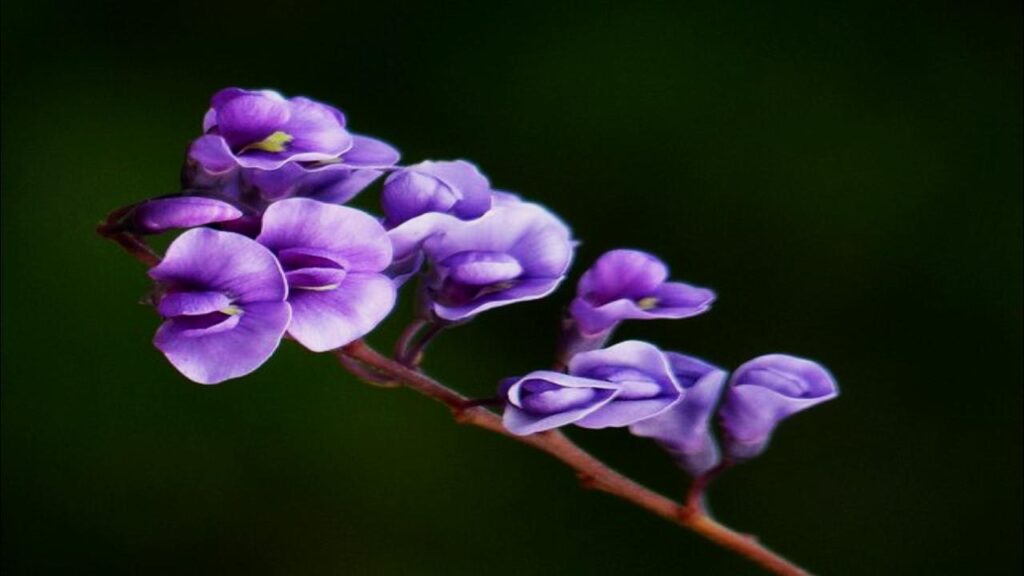
Mandevilla (Mandevilla sanderi or M. x amabilis)
- Why it’s a star: For a touch of the tropics, Mandevilla is unbeatable. Its large, showy, trumpet-shaped flowers in shades of pink, red, and white bloom profusely throughout the summer against a backdrop of glossy green leaves. These are some of the best climbers for containers if you have a sunny spot.
- Growing Guide: Requires full sun and warm temperatures. Provide a sturdy support for its twining stems. Water generously during the growing season, but allow the soil to dry slightly between waterings. Mandevillas can be overwintered indoors in cooler climates. I’ve successfully overwintered mine by cutting them back and placing them in a cool, bright spot.
- Pot Size: Minimum 15-18 inches diameter.
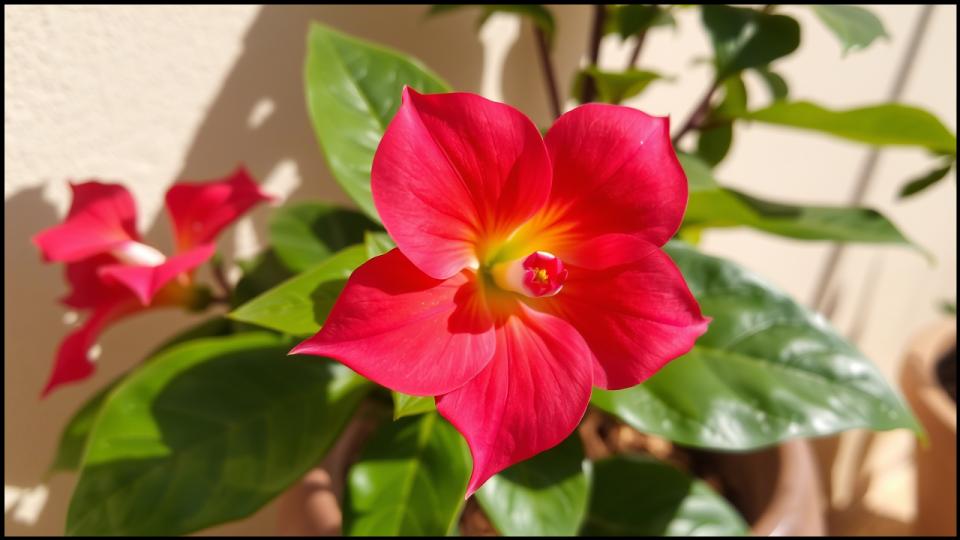
Canary Creeper (Tropaeolum peregrinum)
- Why it’s a star: A delightful and somewhat whimsical annual climber, Canary Creeper (also known as Canary Bird Vine) features uniquely fringed, bright yellow flowers that resemble tiny birds in flight. Its deeply lobed, blue-green leaves are also attractive.
- Growing Guide: Best in full sun to partial shade. It climbs by twining its leaf petioles around supports, so provide a fine trellis or netting. It prefers moderately fertile soil and consistent moisture. It’s a charming, less common choice that always gets comments in my garden.
- Pot Size: Minimum 10-12 inches diameter.
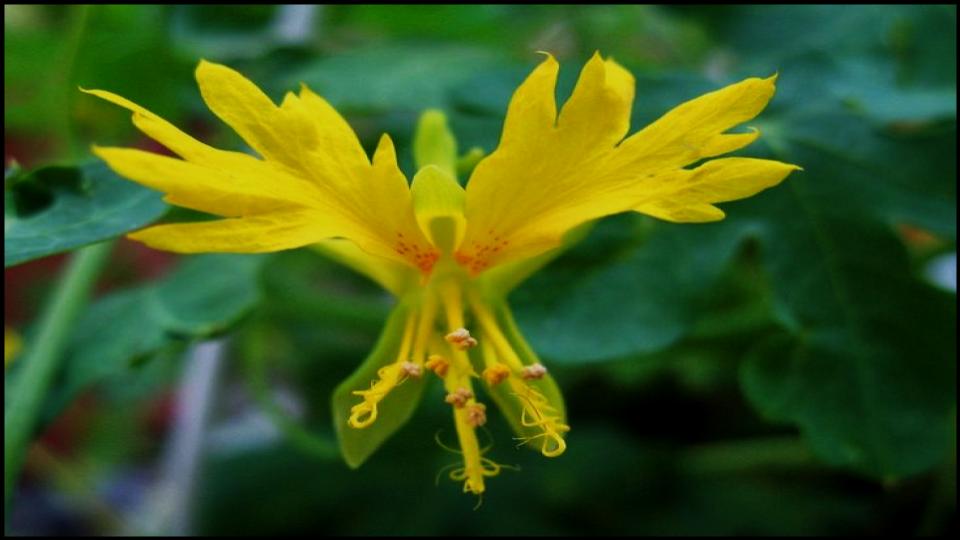
Climbing Miniature Rose (e.g., ‘Jeanne Lajoie’, ‘Warm Welcome’)
- Why it’s a star: The romance of roses can indeed be captured in a pot! Miniature climbing roses offer the classic beauty of their larger cousins but on a more manageable scale. Varieties like ‘Jeanne Lajoie’ (pink) or ‘Warm Welcome’ (apricot-orange) are excellent choices.
- Growing Guide: Roses need at least 6 hours of sun daily. Use a high-quality potting mix rich in organic matter. Provide a sturdy obelisk or small trellis and tie in the canes as they grow. Regular feeding and deadheading will promote continuous blooms. Good air circulation helps prevent diseases. For rose care specifics, the American Rose Society (Note: Search for their container rose growing advice) is an invaluable resource.
- Pot Size: Minimum 20-24 inches diameter and depth.
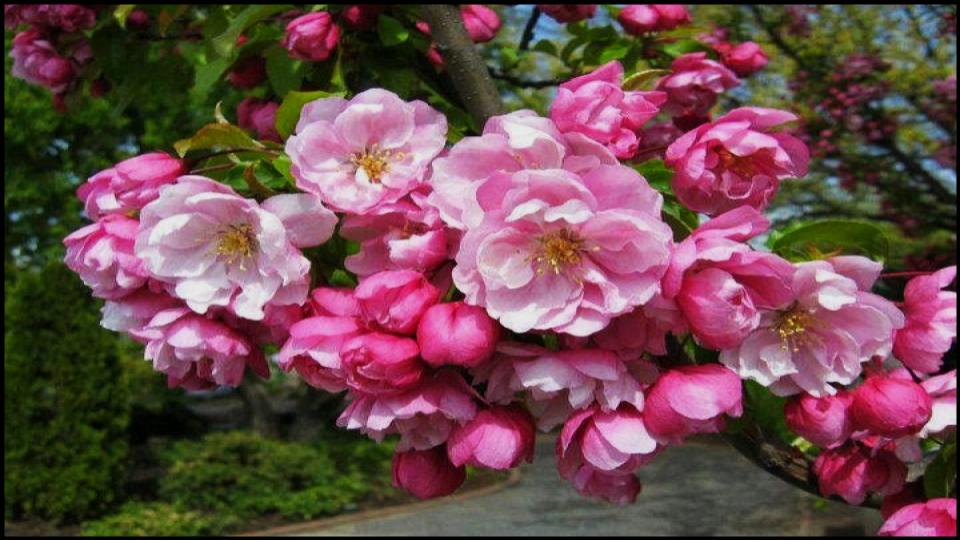
Passionflower (Passiflora caerulea or less vigorous hybrids)
- Why it’s a star: For an exotic, show-stopping display, look no further than the Passion Flower. Its intricate, uniquely structured flowers are simply breathtaking. Passiflora caerulea is relatively hardy, but there are many stunning, slightly more tender hybrids too.
- Growing Guide: Needs full sun and well-drained soil. Passion flowers climb using tendrils. Provide robust support as they can grow quite vigorously, even in pots. Some varieties may need winter protection or to be brought indoors in colder regions. Water regularly during active growth. A common mistake I see is underestimating their vigor; even in a pot, they need room to climb.
- Pot Size: Minimum 18-20 inches diameter.
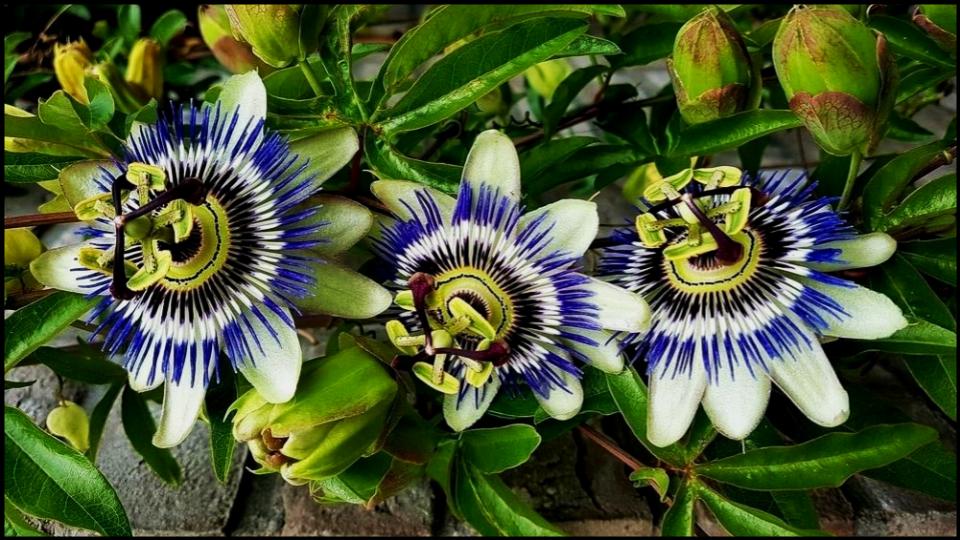
Setting the Stage: Pots, Soil, and Support for Your Climbers
Success with climbing plants for pots begins with the right foundation. Think of it as preparing the perfect canvas for your vertical artwork.
Choosing the Perfect Pot
Size matters significantly. A pot that’s too small will restrict root growth, dry out too quickly, and may even topple over as the plant grows tall. As a general rule, aim for a container that is at least 15-20 inches in diameter and depth for most perennial climbers, though some vigorous annuals might manage in slightly smaller. Larger is often better, providing more stability and a more consistent environment for the roots.
Material choice can also play a role. Terracotta pots are classic and porous, allowing for good air exchange, but they also dry out faster. Glazed ceramic pots retain moisture better and come in beautiful designs. Resin or high-quality plastic pots are lightweight and retain moisture well, making them practical for balconies. Whatever material you choose, ensure there are ample drainage holes. This is non-negotiable for healthy roots.
The Ideal Soil Mix
Container plants rely entirely on the potting mix for their nutrients and anchorage. Don’t use garden soil, which can become compacted and poorly drained in pots. Instead, opt for a high-quality, well-draining potting mix. Look for mixes containing peat moss or coir, perlite or vermiculite for aeration, and compost or well-rotted manure for nutrients. For plants that prefer slightly acidic conditions, like some clematis, an ericaceous mix can be beneficial. I often amend my standard potting mix with extra compost to give my climbers a good start.
Essential Support Structures
Most climbing plants need a helping hand to reach their vertical aspirations. The type of support depends on how the plant climbs:
- Twiners (like Star Jasmine, Morning Glory, Mandevilla, Black-Eyed Susan Vine): These plants wrap their stems around a support. They do well with trellises, poles, obelisks, or even wires.
- Tendril Climbers (like Sweet Peas, Passion Flower): These use specialized wiry tendrils to grasp onto supports. Netting, fine wire mesh, or trellises with thin rungs work best.
- Leaf-Stalk Climbers (like Clematis, Canary Creeper): These wrap their leaf stalks (petioles) around supports. Similar structures to tendril climbers are suitable.
- Scramblers/Roses: Plants like climbing roses don’t climb actively but produce long canes that can be trained and tied onto a support like a trellis, arch, or pillar.
Crucially, install your support structure at the time of planting. Adding it later can damage the plant’s delicate roots.
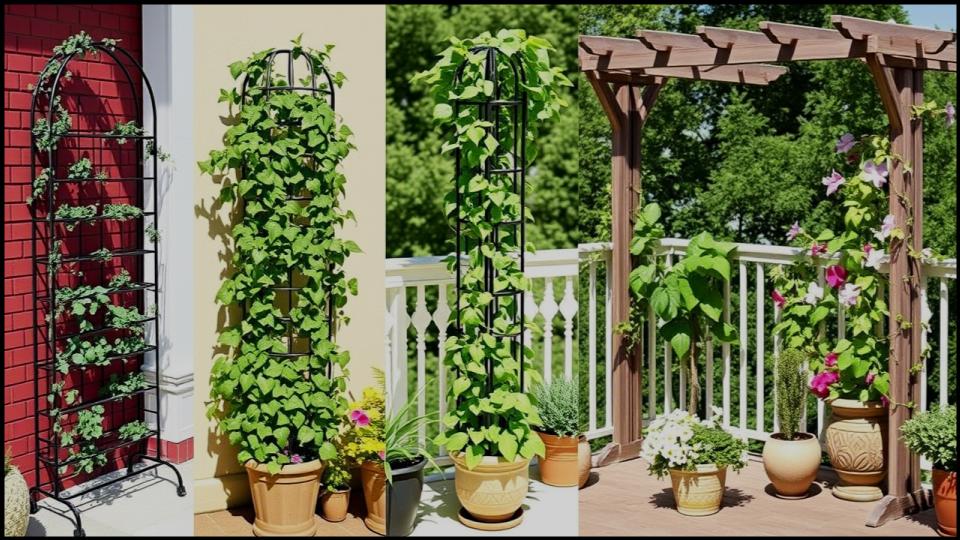
TOOLS AND MATERIALS BOX:
- Pots: Various sizes (15-24 inch diameter), with drainage holes.
- Potting Mix: High-quality, well-draining mix.
- Slow-Release Fertilizer: For incorporating at planting time.
- Liquid Fertilizer: For regular feeding (e.g., seaweed extract, tomato feed).
- Support Structures: Trellises, obelisks, bamboo canes, netting (choose based on plant type).
- Plant Ties: Soft twine, Velcro plant ties, or clips for securing stems.
- Watering Can or Hose: With a gentle rose attachment.
- Gardening Gloves: To protect your hands.
- Trowel: For planting.
- Mulch (optional): Shredded bark or coco chips to retain moisture on soil surface. ]
Nurturing Your Vertical Masterpiece: Care and Maintenance
Once planted, your potted climbers will need consistent care to thrive and reward you with their beauty. This is where your relationship with the plant truly blossoms.
Watering Wisely
Plants in containers dry out much faster than those in the ground, especially during warm, sunny, or windy weather. Check the soil moisture daily by inserting your finger about an inch deep. Water thoroughly when the top inch or two feels dry, allowing water to drain out from the bottom holes. Avoid letting the pot sit in a saucer full of water, as this can lead to root rot. In my garden, I find that a good, deep watering less frequently is better than small, frequent sprinklings.
Feeding for Flourishes
Potting mix has a finite supply of nutrients. To keep your climbers growing strong and flowering abundantly, regular feeding is essential. I like to incorporate a slow-release fertilizer into the potting mix at planting time. Then, supplement with a liquid fertilizer (like a balanced feed or one higher in potassium for flowering plants, such as tomato food) every 2-4 weeks during the active growing season, following the product instructions. Always water the plant before applying liquid fertilizer to avoid burning the roots.
Pruning and Training
Pruning helps maintain the size and shape of your climber, encourages bushier growth, and can stimulate more flowers. The pruning needs vary greatly depending on the plant:
- Annual climbers like Morning Glory or Sweet Peas generally just need deadheading (removing spent flowers) to encourage more blooms.
- Perennial climbers like Clematis have specific pruning groups – it’s vital to know which group your variety belongs to. Information from a reliable source like Clematis on the Web (Note: This is a highly specialized academic resource, search for a more general .edu or botanical garden pruning guide for clematis if this is too niche) can be very helpful.
- Star Jasmine benefits from a light trim after flowering to maintain shape.
- Climbing Roses are typically pruned in late winter or early spring.
Training involves gently guiding new growth onto the support structure, using soft ties if necessary. This helps the plant establish a good framework and ensures even coverage.
Overwintering Potted Climbers
For tender perennials like Mandevilla or some Passion Flowers grown in cooler climates (typically USDA zones 7 or below), winter protection is necessary. This might involve moving the pot to a sheltered location (like against a house wall), wrapping the pot in bubble wrap or burlap for insulation, or bringing the plant indoors to a cool, bright, frost-free place like a garage or unheated sunroom. Reduce watering significantly for dormant plants. Hardier perennials will usually survive winter in their pots if they are rated for your climate zone, but ensuring good drainage is even more critical in wet winters.
Styling Your Potted Climbers: Elevating Your Outdoor Decor
Beyond their individual beauty, climbing plants for pots offer wonderful opportunities for creative styling, turning your outdoor areas into chic, personalized retreats. Think about how these vertical elements can enhance your overall design.
- Create a Focal Point: A tall obelisk adorned with a vibrant clematis or a fragrant star jasmine can become a stunning focal point on a patio or balcony. Position it where it draws the eye and adds a touch of drama.
- Soften Walls and Fences: Use trellises against bare walls or fences and let your climbers weave their magic, transforming stark surfaces into living tapestries of green and color. This is particularly effective in small space gardening where every surface counts.
- Frame an Entrance or View: A pair of matching potted climbers flanking a doorway creates an inviting entrance. Alternatively, use a climber to frame a pleasant view, drawing attention to it.
- Privacy Screens: Strategically placed pots with dense climbers like Star Jasmine can create natural, beautiful privacy screens for overlooked balconies or seating areas. I often recommend this to friends in urban settings.
- Layered Look: Combine potted climbers with other containers of varying heights filled with mounding or trailing plants. This creates a lush, multi-dimensional effect. For example, pair a tall climbing rose with a pot of cascading lobelia or alyssum at its feet.
- Color Harmonies and Contrasts: Choose climbers whose flower or foliage colors complement or contrast with your outdoor furniture, cushions, or surrounding plants. A deep blue morning glory against a yellow wall can be striking, while soft pink sweet peas can add a romantic touch to a white-washed setting.
- Pot Style: Don’t underestimate the impact of the container itself! Select pots that align with your aesthetic – sleek and modern, rustic terracotta, or ornate glazed ceramics. The pot is part of the overall masterpiece.

Your Vertical Garden Awaits
Embracing climbing plants for pots is an invitation to think differently about your gardening space, no matter its size. It’s a chance to add height, drama, fragrance, and deeply personal style to your surroundings. From the exuberant burst of annual Morning Glories to the timeless elegance of a climbing Rose or the intoxicating perfume of Star Jasmine, there’s a potted climber ready to transform your balcony, patio, or doorstep into a verdant masterpiece.
With a little thoughtful selection, the right pot and support, and consistent care, you can cultivate a thriving vertical garden that will bring you joy season after season. So, dare to reach for new horticultural heights. The beauty of an upwardly mobile garden is well within your grasp, promising a delightful journey and a stunning destination.
Read More
9 Rose-Care Mistakes Even Experienced Gardeners Make—Fix Them Fast
The Truth About Banana Water for Plants—Experts Reveal What Happens
